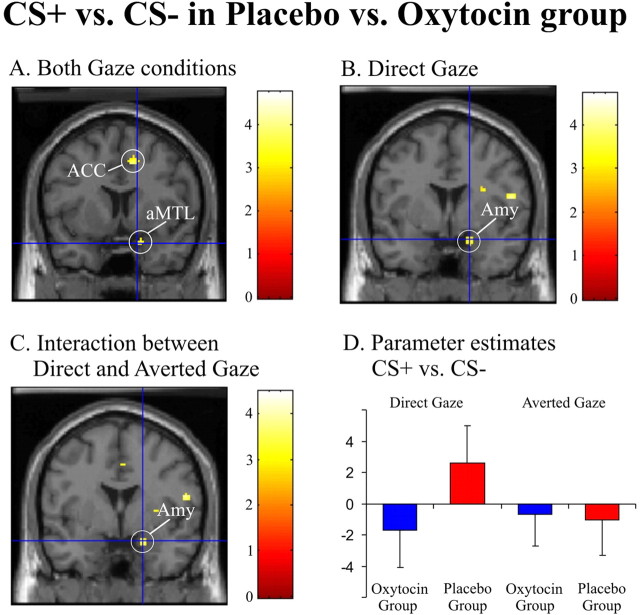Figure 3.
Oxytocin modulates processing of socially relevant fear stimuli in the amygdala. A, Neural responses to CS+ relative to CS− face stimuli are stronger in the placebo than in the oxytocin group in anterior medial temporal lobe (aMTL) and ACC [(CS+ > CS−)placebo > (CS+ > CS−)oxytocin: (x, y, z) = (16, 8, −24); t = 3.70 and (x, y, z) = (10, 10, 44); t = 4.75, respectively]. B, Similar treatment effects were observed in the amygdala (Amy) when restricting the analysis to faces displaying direct gaze only [(CSdg+ > CSdg−)placebo > (CSdg+ > CSdg−)oxytocin: (x, y, z) = (18, 2, −20); t = 3.45]. C, In a three-way ANOVA, a comparison of direct- versus averted-gaze faces as a function of fear processing showed larger activation for direct gaze [(CSdg+ > CSdg−) > (CSag+ > CSag−) in the placebo group than the oxytocin group: (x, y, z) = (20, 0, −20); t = 3.55]. All activations are superimposed on a mean structural image and thresholded at p = 0.005. D, Parameter estimates characterizing the three-way interaction between fear conditioning, gaze, and treatment. Error bars indicate SE.

